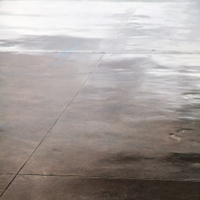Million-Dollar Mistakes-The Stakes of Excessive Concrete Moisture
The American Society of Testing and Materials (ASTM) createdF2170-11 to acknowledge the methodological integrity of concrete moisture measurement based on a slab’s relative humidity (RH) levels. Traditionally, installers have used the anhydrous calcium chloride test (CaCl), but its measurement method has proven to be less dependable. Installers are embracing relative humidity testing for concrete moisture measurement to meet building standard ASTM F2170-11 and to avoid the high cost of unidentified excess moisture conditions.
 Wagner Meters developed their industry-leading Rapid RH® system due, in part, to the enormous negative consequences of excess moisture content to the industry. Literally millions of dollars per year are lost because contractors do not allow sufficient time for moisture content to leave a concrete slab as it cures and dries. RH testing is an industry answer to multiple concrete problems caused by moisture.
Wagner Meters developed their industry-leading Rapid RH® system due, in part, to the enormous negative consequences of excess moisture content to the industry. Literally millions of dollars per year are lost because contractors do not allow sufficient time for moisture content to leave a concrete slab as it cures and dries. RH testing is an industry answer to multiple concrete problems caused by moisture.
Two Ways to Leave the Slab Wet
Concrete moisture levels can be influenced by the natural moisture content of the building envelope’s surrounding ground. If MC permeates a slab at grade (ground level), water vapor rises and distributes through the concrete slab. The natural drying process causes moisture content to move from the slab bottom to the surface. Whether MC enters a slab due to poor mixture, hydrostatic pressure or seepage below grade, moisture content held deeply within a slab goes unrecognized by the anhydrous calcium chloride test. The surface moisture vapor emissions rate (MVER) reads only surface moisture content at the time of testing.
By contrast, RH testing utilizes in-situ probes which accurately read overall slab moisture content at a depth of 40 percent, which is the depth determined over years of testing to correctly indicate the final MC if the slab were sealed at that point in the drying process. RH testing provides the full picture of slab moisture content.
Contractors lacking full concrete moisture data may mistakenly trap slab moisture content by prematurely applying floor coverings or finishes. Moisture content can be literally encapsulated just below the finished flooring surface. Some finishes may be more breathable, but the natural moisture migration is still slowed. Beware of the truth beneath the surface, because that truth can dramatically pronounce itself in the form of multiple moisture-related problems.
Problems with Excessive Moisture Content
 Moisture problems can appear in the slab itself with staining, crazing, pop-outs or other issues occurring as the slab continues to dry. While these are sometimes viewed as largely cosmetic problems, they can also present safety issues or, in extreme cases, slab integrity issues. Performance is often adversely influenced by excessive slab moisture.
Moisture problems can appear in the slab itself with staining, crazing, pop-outs or other issues occurring as the slab continues to dry. While these are sometimes viewed as largely cosmetic problems, they can also present safety issues or, in extreme cases, slab integrity issues. Performance is often adversely influenced by excessive slab moisture.
Above the slab, floor finishes are increasingly being manufactured with water-based materials instead of volatile organic chemicals (VOCs). While this is eco-friendly, installers need to verify the moisture content specifications of finishes and compare them with the moisture content conditions in the slab. The combination can produce excess moisture, and excessively moist slab surfaces could cause the floor covering and adhesive to not bond to the slab surface appropriately.
At its worst, excess moisture content can lead to total flooring failure, and the costs of liability and remediation can skyrocket. Slab MC problems require cost and time to remediate, which could have been identified with proper RH testing.
The Wagner Meters Answer
The Rapid RH® L6 is a timely and cost-effective way to accurately assess concrete moisture content as specified by ASTM F2170-11. Once the Smart Sensor in-situ probes are inserted into drilled test holes, assessors can measure slab MC quickly and accurately to be sure flooring installation is not begun before the slab has adequately dried to the required finished flooring specs.
Wagner Meters designed the Rapid RH® L6, with proprietary Smart Sensors, so that once installed and fully equilibrated, RH testing can be conducted quickly, accurately and as often as necessary without lengthy re-equilibration waits between readings. For both quality installation and industry compliance, the Rapid RH® provides a solid footing for flooring installation.
When reliable MC measurement supports multi-million dollar concrete structures, the Wagner Meters Rapid RH® L6 is a fail-safe way to ensure concrete moisture specifications according to ASTM F2170.
